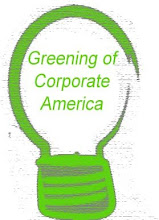Greenhouse Gas Emissions
In 2005, AT&T became the first telecommunications company to join the California Climate Action Registry for operations in California. This registry, created by a California statute in 2001, helps companies and organizations track, publicly report and reduce emissions of the gases that can lead to global climate change.
Results from this registry are certified by independent organizations to confirm accuracy. More than 40 major companies, cities, government and nongovernment agencies belong to the registry. As a member, AT&T will voluntarily measure and publicly report its California emissions of greenhouse gases.
Additionally, AT&T is investigating centralizing its electricity and fuel purchases for cost-control purposes, and the company has a good model to follow. Before its merger, and while operating as SBC, AT&T reduced its overall fleet of vehicles by 26 percent. Today, AT&T purchases low-emission vehicles.
In addition, from 2001 to 2004 the company:
- Decreased its annual gasoline-fuel consumption by 10 percent.
- Deceased its annual diesel-fuel consumption by 20 percent.
AT&T also recycles used oil and antifreeze from its fleet of service vehicles and backup power generators. This reduces energy usage and the generation of air emissions related to petroleum production and refining.
Waste Minimization
AT&T's technology provides the infrastructure for enabling environmental improvements throughout the global economy. Services such as teleconferencing, videoconferencing, electronic commerce, e-billing and NetMeeting are prime examples of AT&T technologies that directly reduce or eliminate energy and material consumption.
AT&T recognizes the need to use energy and other natural resources responsibly. Since 1998, AT&T has continued to drive cost-savings and improvements in energy efficiency across its facilities. AT&T’s energy programs have improved the energy efficiency of some of our data centers by nearly 25 percent.
eBill Paperless Program
AT&T actively promotes online paperless billing and printing double-sided phone bills.
AT&T and The National Arbor Day Foundation received the Silver Cause Marketing Halo Award for Best Environmental/Wildlife Program in 2006. The honor was awarded in recognition of AT&T's successful eBill Paperless Program campaign with The National Arbor Day Foundation to encourage residential and small business customers to sign up for AT&T eBill service and promote tree planting.
AT&T Yellow Pages directories are printed on paper containing more than 40 percent post-consumer recycled content and are produced with an intent to be recycled. Books are recycled into new phone books, news print, cardboard boxes, compost, insulation and other household products.
More than 520,000 residential and small business customers responded to AT&T's pledge to donate $1 to The National Arbor Day Foundation for each customer who switched to paperless billing during the 2005 – 2006 campaign. From July 2005 through March 2006, monthly enrollments in AT&T”s eBill service increased 54 percent.
AT&T eBill service gives subscribers secure online access to current statements, payment options and archived account histories – virtually anytime, anywhere – for all services combined on their AT&T bill, including AT&T local, AT&T long distance, AT&T Yahoo!® High Speed Internet, AT&T | DISH Network satellite television and Cingular Wireless services. Enhanced features include the ability to view the name and contact information of dialed persons, as well as the option to sort statements by numbers called, length of call, place, date or cost.Cingular Reuse and Recycle
Cingular has introduced a national recycling program, Cingular Reuse & Recycle, to help its customers play an important role in reducing waste. Through the Cingular Wireless Reuse & Recycle program, consumers are invited to bring unwanted wireless phones, Personal Data Assistants (PDAs), accessories and batteries (regardless of the manufacturer or carrier) to Cingular-operated stores and participating authorized dealer stores for recycling.
"Industrial Ecology" is an emerging multidisciplinary field, which studies economic activity and its interrelationship with the environment such that both economic and environmental efficiency can be enhanced. The industrial ecology approach can be a powerful tool for environmental and economic progress.
As a leader in information movement and management, AT&T feels a responsibility for helping universities produce future leaders in fields relevant to industrial ecology and in helping to define and focus research activities, particularly when this field interacts with information and communications technology and services.
The AT&T Industrial Ecology Faculty Fellowship Program is intended to stimulate interdisciplinary research and curriculum development that involve social issues, engineering, the sciences, economics, management, business, law and public policy issues. For the past 12 years, the AT&T Foundation has provided awards of $25,000 to each academic researcher
Recipients
Recipients of past awards have included a few international universities such as Delft and United Nations University in Tokyo and public and private universities across the U.S, from Alaska to Florida and Massachusetts to Southern California. The fellowships also have supported student research, with some of the students eventually applying as faculty fellows. The program has been recognized by the National Science Foundation and its Canadian equivalent.
Program Accolades
In May of 2006, AT&T was honored by the Journal of Industrial Ecology (JIE) for its pivotal role in the journal's development and its significant contributions to the field of industrial ecology. The official journal of the International Society for Industrial Ecology, the JIE is an international, peer-reviewed quarterly designed to foster understanding of and practice in the emerging field of industrial ecology. At an event sponsored by Yale University, scholarly and nongovernmental organization leaders in the field gave AT&T special recognition for its continued support in this area.
